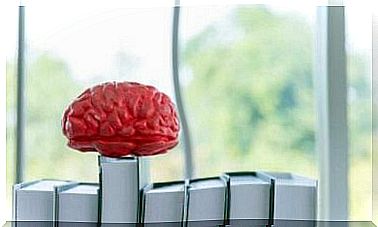Is There An Area Of happiness In The Brain?
Today we are going to focus on a study that concerns the fascinating functioning of our brains. It seems that the zone of happiness has been found and can be electrically stimulated. This supposes a wide range of possibilities for the treatment of certain pathological conditions.
In fact, the study began with brain mapping with electrical stimulation on patients who suffered from epilepsy. The researchers discovered, quite by accident, that the electrical stimulation of the cingulum made those tested laugh. It also seemed to produce great feelings of well-being and calm.
We already knew that stimulating certain areas of the brain could cause an uncontrollable urge to laugh. However, this finding did identify one in particular, which appears to significantly reduce anxiety when stimulated.
The study
The team of neuroscientists at Emory University School of Medicine in Atlanta focused on patients with epilepsy. They had placed small electrodes on their brains to stimulate a few areas electrically. The goal was to find information about the neuronal source of the seizures in their patients.
While stimulating the cingulum bundle of one of the young patients, an area of white matter that connects several regions of the brain caused her to burst out laughing uncontrollably. The young girl also started to feel relaxed and at ease.
The researchers therefore decided to show this person a set of facial expressions that evoked happiness, sadness, the absence of emotions… The patient described the faces as happier when she was subjected to electrical stimulation. So that indicated that she was in a good mood.
We also assessed the level of cognition when this zone of happiness was stimulated in the brain. The patient was subjected to memory, attention and language tests. However, cognition was not affected, either positively or negatively. In other words, the electrical stimulation had no influence on her.
The study continued with the same tests on two other patients who suffered from epilepsy. These subjects showed the same responses to electrical stimulation of the cingulum bundle as the first patient. Each time, a feeling of calm and bursts of laughter appeared.
The reason why this area of the brain causes laughter and a feeling of calm
The cingulum is located below the cortex and around the midbrain. It is in the upper frontal part that this zone of happiness has been located. This area has many connections that unite regions of the brain linked to complex emotions.
The white matter that passes through the cingulum connects several lobes. By being stimulated, other networks that extend throughout the rest of the brain can be affected. It would therefore seem that it serves as an intermediate zone.
Jon T. Willie, a scientist who was on the team, likens it to a great road with many branch lines. The team believe they may have discovered access to multiple networks that regulate mood, social interaction, and emotions.
What does this discovery imply for the future?
The main idea behind this extraordinary discovery centers on the use of electrical stimulation as part of the intervention for anxiety disorders, depression and even chronic pain.
Another line of research could open with the use of electrical stimulation in this happiness zone of the brain to help have more pleasant experiences during neurosurgery, operations in which patients are forced to stay awake.
In any case, we will have to wait for technologies to improve because this type of treatment requires invasive surgery. The electrodes should be placed directly in the brain, which involves a high risk operation.
Either way, this is an extremely important discovery that brings us one step closer to real knowledge of our brains. It draws a hopeful path on the horizon, which will improve all mood-related interventions, whether replacing or supplementing them.








